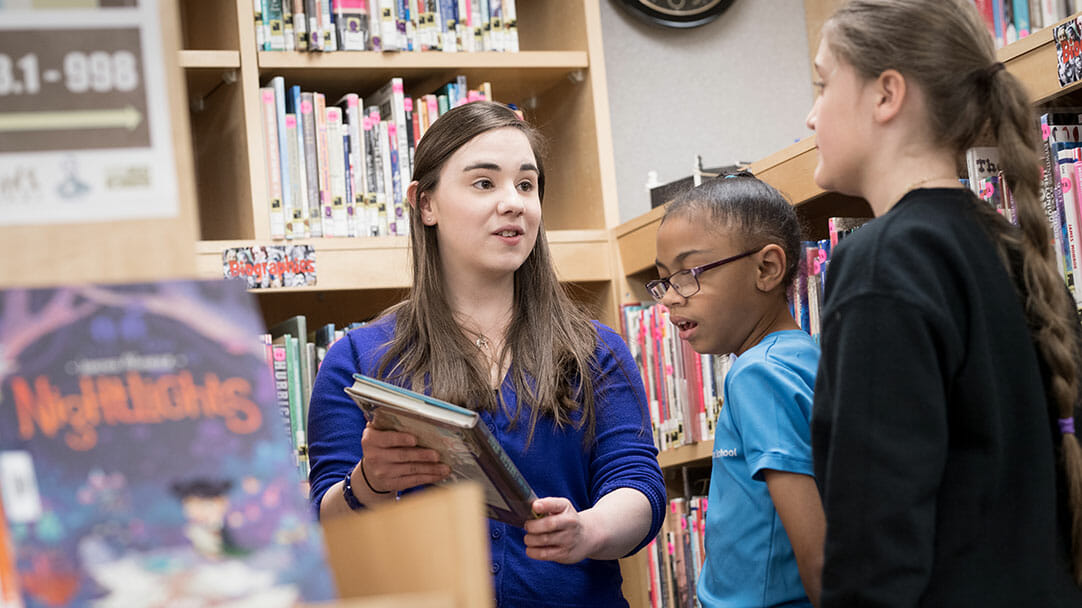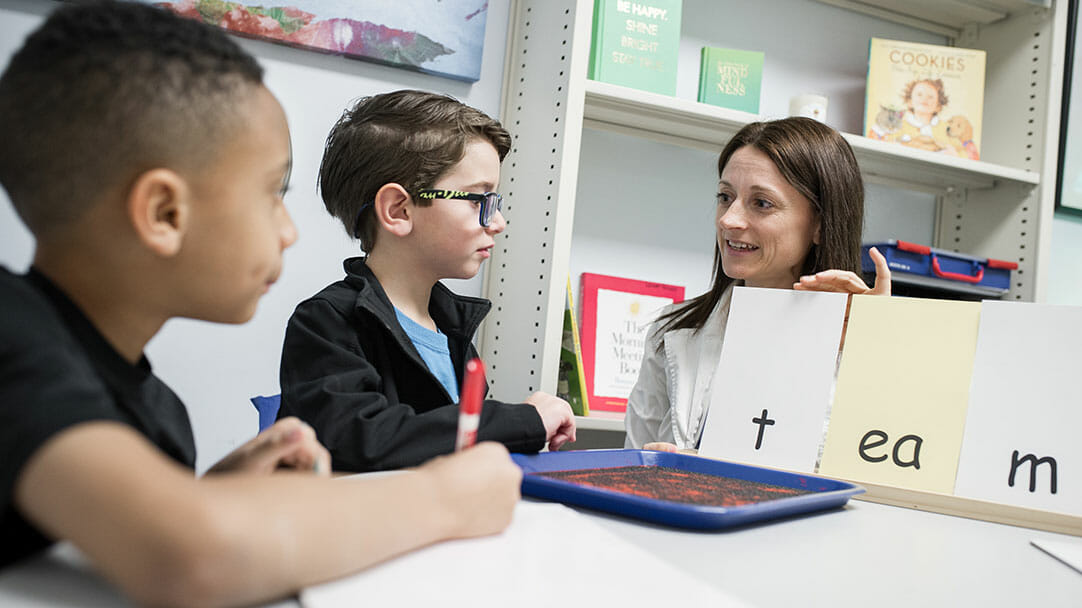Marie Marino, Assistant Head of Lower School
and Coordinator of Learning Services 2022
Rethinking Reading at Home


Many of us have experienced the shift that happens when our children go from peacefully and happily listening to books on our laps while we read aloud, to the avoidance and frustration that comes once our children are expected to decode (sound out) those books in school and at home. Suddenly, books are no longer associated with bonding and they become triggers for anxiety and stress. This is not an indicator that we have failed or that our kids just “aren’t readers.” There are real, scientific reasons for these responses once the “learning to read” phase kicks in. In order to understand them and intervene, let’s look at the evolution of the brain.
Understanding the Function of Reading
There is a brain-based reason for why reading is so hard. Spoken language is hard-wired inside the human brain, as our language capacity evolved about 100,000 years ago. The human brain is fully adapted for verbal communication. However, written language is a human invention. Humans have been reading and writing for only a few thousand years, which is too short for major evolutionary changes. Instead, reading likely depends on circuits that originally evolved to support spoken language.
In fact, in literate, but not illiterate, people, written words trigger brain activity in parts of the left temporal lobe that respond to spoken language. To better demonstrate this, notice how you are reading this blog. You can hear your internal voice saying the words, using expression, and communicating to yourself while connecting to the text. What this means is that humans read text for the same reasons that humans listen to others speak –to communicate and connect– skills that have helped us survive and thrive.
The Impact of Technology on Young Readers
Unfortunately, this connection through reading is lost in today’s fast-paced, technology-dependent, multi-tasking world. Children are not necessarily spending less time reading; rather, they are reading on a more surface level and in less socialized settings. Reading occurs in fleeting ways as children quickly skim a blog, glance at a text, or scroll through tweets. Family members read on their respective devices and then jump into the next activity without discussion or reflection. As we lose the quality of reading, we miss opportunities for a deeper connection with the text and with each other as families. As a result, we lose the evolutionary motivation to read.
Back to the brain. During childhood development, the earlier-developing, affective networks that store feelings and sensory memories are more primed for learning than are the slower developing, higher level processing centers that focus on critical thinking. The emotional brain in the back filters all incoming information and guides our learning. So, if something is emotionally stimulating, it will be marked for memory and prioritized as important in the brain. However, as information, like learning to read, becomes more and more rote, it lacks meaningful context and emotion and our efficient brains drop it. Likewise, as reading becomes more rigorous and rushed, it creates stress and our children’s brains will react with the fight or flight response to any request to engage with books at home.
As parents of children in Lower School and Middle School, let’s capitalize on the more firmly-established areas of our children’s brains and approach reading through the emotional gateway. Let’s re-activate the positive emotional state with reading and foster the association that reading means excitement, entertainment, and enjoyment and that it is a skill that is relevant to our lives together.
Techniques for Overcoming Reading Anxiety
Get the Family Involved
We can do this by slowing down, making meaningful connections, and creating memories. Family or friend book clubs are one way to do this. You could vote on a common book and then meet once or twice a month to discuss it. Or, create an out of the ordinary experience as a family by turning your living room into a campsite and passing around a flashlight while telling spooky stories. There are also a lot of ways that technology can bring out the social and engaging components of reading. For example, you could create a family blog, write posts about books, and comment on each other’s thoughts. You could use Tales2Go or Overdrive and listen to a book in the car together on the way to and from school while you gasp together when there is suspense and laugh together when there is humor. Don’t know what to give your child for a birthday gift? Give a book and add a note about why that particular story is special to you! Books connect us to each other and this is a beautiful way to express that.
Extend the Experience
The actual act of reading is only the beginning! You could extend the reading experience by doing book-inspired activities or going on book-cations. Why not eat some Turkish Delight after reading The Lion, The Witch, and the Wardrobe or go to the petting zoo once you finish Charlotte’s Web? Re-enact a familiar story and get silly with the characters’ voices and costumes. Break out the Legos and create a stop-motion book trailer or construct the setting of a favorite book. Get inspired, get creative, and have fun. This is when the story comes alive!
Redefine “Reading”
The most important piece of this recalibration and rediscovery of the love of literacy is to label these meaningful moments of connection as “reading”… whether they involve the decoding of text or not. Does your child have a picture book that she has never even opened? Get some tracing paper and let her choose an illustration in the book to sketch. Proudly proclaim as she is working, “THIS is reading!” Does your child love watching baking shows but refuse to read? Print and follow a recipe together, bake something delicious, and before you take the first bite into the scrumptious creation, cheers your cupcakes and announce with delight, “Now THIS is reading!” The point is to reset the association that your child has with the word “reading”, with books, and with the openness to explore the world through text.
Come Together Through Reading
It’s not a coincidence that our children used to love listening to stories as we snuggled during the bedtime routine. By using what we know about the brain’s evolutionary capabilities for communication and emotion, we can get back to the place where we started. When we are connected in a culture of reading, we are united in a very powerful way and in a way that our brains are designed.
– Marie Marino, Assistant Head of Lower School and Coordinator of Learning Services 2022